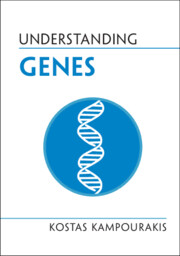Book contents
- Understanding Genes
- Series page
- Understanding Genes
- Copyright page
- Reviews
- Dedication
- Contents
- Foreword
- Preface: Genes, Science, and Science Fiction
- Acknowledgments
- 1 The Public Image of Genes
- 2 The Origin and Evolution of the Gene Concept
- 3 The Devolution of the Gene Concept
- 4 There Are No “Genes For” Characteristics or Disease
- 5 What Genes “Do”
- 6 The Dethronement of Genes
- Concluding Remarks: How to Think and Talk about Genes?
- Summary of Common Misunderstandings
- References
- Index
1 - The Public Image of Genes
Published online by Cambridge University Press: 17 February 2022
- Understanding Genes
- Series page
- Understanding Genes
- Copyright page
- Reviews
- Dedication
- Contents
- Foreword
- Preface: Genes, Science, and Science Fiction
- Acknowledgments
- 1 The Public Image of Genes
- 2 The Origin and Evolution of the Gene Concept
- 3 The Devolution of the Gene Concept
- 4 There Are No “Genes For” Characteristics or Disease
- 5 What Genes “Do”
- 6 The Dethronement of Genes
- Concluding Remarks: How to Think and Talk about Genes?
- Summary of Common Misunderstandings
- References
- Index
Summary
This chapter is about the public image of genes. But what exactly do we mean by “public”? Here, I use the word as a noun or an adjective vaguely, in order to refer to all ordinary people who are not experts in genetics. I thus contrast them with scientists who are experts in genetics – that is, who have mastered genetics-related knowledge and skills, who practice these as their main occupation, and who have valid genetics-related credentials, confirmed experience, and affirmation by their peers. I must note that both “experts” and “the public” are complex categories that depend on the context and that change over time. There is no single group of nonexperts that we can define as “the” public, as people around the world differ in their perceptions of science, depending on their cultural contexts. We had therefore better refer to “publics.” The differences among experts nowadays might be less significant than those among nonexperts, given today’s global scientific communities, but they do exist. Finally, both the categories of experts and publics have changed across time, depending, on the one hand, on the level of experts’ knowledge and understanding of the natural world, and, on the other hand, on publics’ attitudes toward that knowledge and understanding.
Keywords
- Type
- Chapter
- Information
- Understanding Genes , pp. 1 - 30Publisher: Cambridge University PressPrint publication year: 2021

